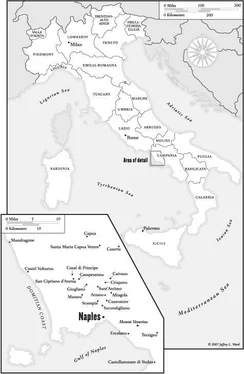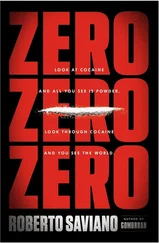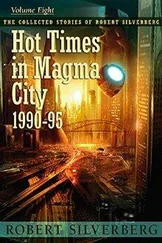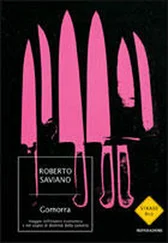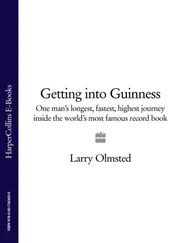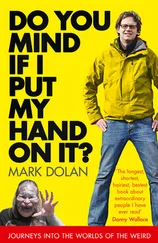Roberto Saviano - Gomorrah - A Personal Journey into the Violent International Empire of Naples’ Organized Crime System
Здесь есть возможность читать онлайн «Roberto Saviano - Gomorrah - A Personal Journey into the Violent International Empire of Naples’ Organized Crime System» весь текст электронной книги совершенно бесплатно (целиком полную версию без сокращений). В некоторых случаях можно слушать аудио, скачать через торрент в формате fb2 и присутствует краткое содержание. Жанр: Старинная литература, на английском языке. Описание произведения, (предисловие) а так же отзывы посетителей доступны на портале библиотеки ЛибКат.
- Название:Gomorrah: A Personal Journey into the Violent International Empire of Naples’ Organized Crime System
- Автор:
- Жанр:
- Год:неизвестен
- ISBN:нет данных
- Рейтинг книги:5 / 5. Голосов: 1
-
Избранное:Добавить в избранное
- Отзывы:
-
Ваша оценка:
- 100
- 1
- 2
- 3
- 4
- 5
Gomorrah: A Personal Journey into the Violent International Empire of Naples’ Organized Crime System: краткое содержание, описание и аннотация
Предлагаем к чтению аннотацию, описание, краткое содержание или предисловие (зависит от того, что написал сам автор книги «Gomorrah: A Personal Journey into the Violent International Empire of Naples’ Organized Crime System»). Если вы не нашли необходимую информацию о книге — напишите в комментариях, мы постараемся отыскать её.
Gomorrah: A Personal Journey into the Violent International Empire of Naples’ Organized Crime System — читать онлайн бесплатно полную книгу (весь текст) целиком
Ниже представлен текст книги, разбитый по страницам. Система сохранения места последней прочитанной страницы, позволяет с удобством читать онлайн бесплатно книгу «Gomorrah: A Personal Journey into the Violent International Empire of Naples’ Organized Crime System», без необходимости каждый раз заново искать на чём Вы остановились. Поставьте закладку, и сможете в любой момент перейти на страницу, на которой закончили чтение.
Интервал:
Закладка:
It was when Francesco Iacomino died that I truly understood the workings of the building trade. He was thirty-three when they found him, in his overalls, on the ground at the intersection of Via Quattro Orologi and Via Gabriele D’Annunzio in Ercolano. He had fallen from a scaffolding. After the accident everyone fled, even the draftsman. No one called an ambulance for fear that it would arrive before they got away. So they left him lying in the street, still alive, spitting blood from his lungs. The news of yet another death, one of the three hundred construction workers who die every year on Italy’s building sites, pierced my insides. Iacomino’s death sparked in me a rage that was more like an asthma attack than nervous excitement. I wanted to be like the protagonist in Luciano Bianciardi’s 1962 novel, La vita agra (It’s a Hard Life), who goes to Milan to blow up the Pirelli building, his way of avenging the forty-eight miners from Ribolla who were killed in May 1954 in an explosion in the “Camorra well,” so called because of the dreadful working conditions. Maybe I too had to choose a building— the building—to blow up. But before I could slip into the schizophrenia of the terrorist, Pier Paolo Pasolini’s “I Know” started echoing in my ears.* Over and over, tormenting me like a jingle. And so instead of searching for buildings to blow sky-high, I went to Casarsa, to Pasolini’s tomb. I went alone, even if this is one of those things you should do with others—with a group of devoted readers, or a girlfriend to make it less pathetic. But I stubbornly went alone.
Casarsa is a nice place, one of those places where it’s easy to think of someone wanting to get by as a writer, and where, on the other hand, it’s hard to think of someone leaving in order to descend into hell. I didn’t go to Pasolini’s tomb to pay him tribute or even to celebrate. Pier Paolo Pasolini. That name—three in one, as the poet Giorgio Caproni used to say—is neither my secular saint nor a literary Christ. I felt like finding a place where it was still possible to reflect without shame on the possibility of the word. The possibility of writing about the mechanisms of power, beyond the stories and details. To reflect on whether it is still possible to name names, one by one, to point out the faces, strip the bodies of their crimes, and reveal them as elements of the architecture of authority. To reflect on whether it is still possible to sniff out, like truffle pigs, the dynamics of the real, the affirmation of power, without metaphors, without mediation, with nothing but the cutting edge of the word.
I took the train from Naples to Pordenone, an incredibly slow train with a remarkably eloquent name—Marco Polo—for the distance it had to travel. An enormous distance seems to separate Friuli from Campania. I left Naples at ten to eight and arrived in Friuli at twenty past seven the next day, having endured a night of relentless cold that kept me from sleeping. From Pordenone I took a bus to Casarsa. When I got off, I started walking with my head down, like someone who knows where he’s going and can recognize the way by looking at the tips of his shoes. Obviously I got lost. But after wandering about aimlessly I found the cemetery on Via Valvasone where Pasolini is buried with all his family. On the left, just past the entrance, was an empty flowerbed. I went over to that square of earth, in the middle of which were two small, white marble slabs, and saw his tomb. “Pier Paolo Pasolini (1922–1975).” Next to it, a bit farther on, was that of his mother. I felt less alone. I began to mumble my rage, fists clenched so tight that my fingernails pierced my palms. I began to articulate my own “I Know,” the “I Know” of my day.
I know and I can prove it. I know how economies originate and where their smell comes from. The smell of success and victory. I know what sweats of profit. I know. And the truth of the word takes no prisoners because it devours everything and turns everything into evidence. It doesn’t need to drag in cross-checks or launch investigations. It observes, considers, looks, listens. It knows. It does not condemn to prison and the witnesses do not retract their statements. No one repents. I know and I can prove it. I know where the pages of the economy manuals vanish, their fractals mutating into materials, things, iron, time, and contracts. I know. The proofs are not concealed in some flash drive buried underground. I don’t have compromising videos hidden in a garage in some inaccessible mountain village. Nor do I possess copies of secret service documents. The proofs are irrefutable because they are partial, recorded with my eyes, recounted with words, and tempered with emotions that have echoed off iron and wood. I see, hear, look, talk, and in this way I testify, an ugly word that can still be useful when it whispers, “It’s not true,” in the ear of those who listen to the rhyming lullabies of power. The truth is partial; after all, if it could be reduced to an objective formula, it would be chemistry. I know and I can prove it. And so I tell. About these truths.
I always try to quiet the anxiety that overcomes me every time I walk, every time I climb the stairs, take the elevator, or wipe my feet on a doormat and cross a threshold. I cannot stop myself from constantly brooding over how these buildings and houses are built. And when someone is willing to listen, it’s difficult for me not to recount how floor after floor gets slapped together. It’s not a sense of universal guilt that comes over me, nor a moral redemption for those who have been canceled from historical memory. Instead I try to cast off the Brechtian mechanism that comes naturally to me, of thinking about the hands and feet of history. In other words, to think more about the constantly empty plates that led to the storming of the Bastille than about the proclamations of Girondists and Jacobins. I can’t stop thinking about it. It’s a bad habit. Like someone in front of a Vermeer painting who, instead of contemplating the portrait, thinks about who mixed the colors, stretched the canvas, and made the pearl earrings. A real perversion. When I see a flight of stairs, I simply cannot forget how the cement cycle works, and a wall of windows can’t keep me from thinking about how the scaffolding was put up. I can’t pretend not to think about it. I can’t see the wall without thinking about the trowel and mortar. Maybe it’s just that people born at certain meridians have a particular, unique relationship with certain substances. Materials are not perceived in the same way everywhere. I believe that in Qatar the smell of petroleum and gas evokes sensations of mansions, sunglasses, and limousines. The same acid smell of fossil fuel in Minsk evokes darkened faces, gas leaks, and smoking cities, whereas in Belgium it calls up the garlic Italians use and the onions of the North Africans. The same thing happens with cement in the south of Italy. Cement. Southern Italy’s crude oil. Cement gives birth to everything. Every economic empire that arises in the south passes through the construction business: bids, contracts, quarries, cement, components, bricks, scaffolding, workers. These are the Italian businessman’s armaments. If his empire’s feet are not set in cement he hasn’t got a chance. Cement’s the simplest way to make money as fast as possible, to earn trust, hire people in time for an election, pay out salaries, accumulate investment capital, and stamp your face on the facades of the buildings you put up. The builder’s skills are those of the mediator and the predator. He possesses the infinite patience of a bureaucrat in compiling documents, enduring interminable delays, waiting for authorizations that come slowly, like the dripping of a stalactite. He’s like a bird of prey who flies over land no one else notices, snapping it up for a few pennies, then holds on to it until every inch, every hole, can be resold for astronomical amounts. The predatory businessman knows how to use his beak and claws. And Italian banks seem made for the builders; they know to grant the builder maximum credit. And if he really has no credit and the houses he will build are not enough of a guarantee, some good friend will always back him. The concreteness of cement and brick is the only real materiality that Italian banks recognize. Bank directors think that research, laboratories, agriculture, and crafts are vaporous terrain, ethereal, and devoid of gravity. Rooms, floors, tiles, phone jacks and electrical outlets—these are the only forms of concreteness they recognize. I know and I can prove it. I know how half of Italy has been built. More than half. I am familiar with the hands, the fingers, the projects. And the sand. The sand that has constructed skyscrapers, neighborhoods, parks, and villas. No one in Castelvolturno can forget the endless rows of trucks that pillaged the Volturno River of its sand. Lines of trucks flanked by farmers who had never seen such mammoths of metal and rubber before. Farmers who had managed to stay on here, to survive instead of emigrating, watched as they carted it all away, right before their very eyes. Now that sand is in the walls of apartments in Abruzzo, in buildings in Varese, Asiago, and Genoa. Now it is no longer the river that flows to the sea, but the sea that flows into the river. Now they fish for sea bass in the Volturno, and there are no more farmers. Deprived of their lands, first they turned to raising buffalo, and then set up small construction companies, hiring the young Nigerians and South Africans who used to find seasonal employment on the farms. If they didn’t join up with the clans, they met an early death. I know and I can prove it. Extraction firms are authorized to remove small amounts, but they actually devour entire mountains and crumble hills. Kneaded into cement, the mountains and hills are all over the place now, from Tenerife to Sassuolo. The deportation of things has followed that of people. I met Don Salvatore in a trattoria in San Felice a Cancello. Once a master builder, now he was a walking corpse. He wasn’t more than fifty years old, but he looked eighty. He told me that he worked for ten years adding exhaust-fume dust to cement mixers. Companies connected to the clans use cement to hide waste, which is what allows them to come in with bids as low as if they were using Chinese labor. Now garages, walls, and stair landings are permeated by poison. Nothing will happen until a worker, some North African probably, inhales the dust and dies a few years later, blaming his ill luck for his cancer.
Читать дальшеИнтервал:
Закладка:
Похожие книги на «Gomorrah: A Personal Journey into the Violent International Empire of Naples’ Organized Crime System»
Представляем Вашему вниманию похожие книги на «Gomorrah: A Personal Journey into the Violent International Empire of Naples’ Organized Crime System» списком для выбора. Мы отобрали схожую по названию и смыслу литературу в надежде предоставить читателям больше вариантов отыскать новые, интересные, ещё непрочитанные произведения.
Обсуждение, отзывы о книге «Gomorrah: A Personal Journey into the Violent International Empire of Naples’ Organized Crime System» и просто собственные мнения читателей. Оставьте ваши комментарии, напишите, что Вы думаете о произведении, его смысле или главных героях. Укажите что конкретно понравилось, а что нет, и почему Вы так считаете.
